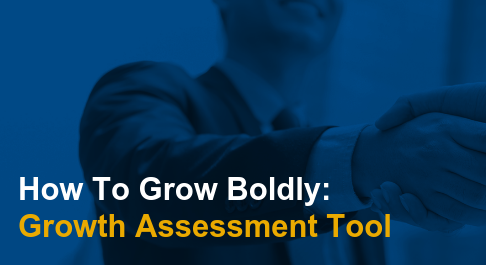
Growth
Law Firm Growth and Succession Planning: 4 Considerations
When it comes to law firm growth and succession planning, there are four essential considerations: Grow your firm through expansion; sell your practice or join with a growing law firm; secure your law firm’s future through succession planning; or value your law firm’s case inventory.
With businesses putting more distance from the strain of recent years, the legal industry is experiencing an unprecedented wave of consolidation in the form or mergers and acquisitions.
For law firms that invested in digital marketing, technology and resources during the pandemic, the focus is now centered on increasing new cases, expanding geographic reach, and diversifying into new practice areas through acquisitions.
For many smaller law firms, survival has become a key consideration resulting from the accelerated migration of consumers online, the reduction of case intake, rising case costs, and increased competition for a smaller pool of cases. For these law firms, the focus is centered on looking to merge with growing firms or sell, considering internal successors, or maintaining current operations.
No matter your focus for law firm growth and succession planning, there are four essential considerations.
#1: Growing your law firm through expansion
As law firm leadership — managing partners, chief operating officers and chief financial officers — evaluate the need to grow the firm, they are looking to enter into new practice areas, such as mass tort cases, to expand into new geographic markets, or to invest in the areas of marketing, technology, and resources.
In all instances, these growth strategies require capital or cash flow that is freed up for investment. In short, it comes down to “smart money” strategies.
The heart of a smart money strategy is to operate in the frame of mind that there is always something to learn about your firm as a business. This mindset can help keep law firm owners auditing processes to make them more financially efficient, digging into data and metrics in all aspects of the firm’s operating procedures, being open to new ways to grow your firm whether it is through operations or new practice areas, and considering outsourcing operations such as case cost financing when it is appropriate.
The challenge of improving law firm liquidity and cash flow
Contingency fee law firms are capital-intensive businesses. For most contingency fee law firms, financing operations and managing cash flow present significant challenges, especially if the managing partner is self-financing the case costs. Typically, law firms that are self-financed use after-tax dollars earned from previous cases to cover current case costs. However, as case settlements push out into the future and case disbursements increase, the law firm and the partner feel the weight of that financial burden. Moreover, this tying up of capital inhibits the law firm’s ability to pursue growth initiatives.
According to Chad Dudley, Managing Partner, Dudley DeBosier Injury Attorneys, “Growth takes up a lot of cash and you grow your firm by increasing the value of your cases or getting more cases in the door. Both of those things require cash.”
For law firms pursuing financing through traditional banks, the limitations on credit facilities also presents a difficulty. Most traditional banks evaluate a law firm based on past financial performance. The resulting restrictions on credit, stricter terms and personal collateral requirements lead to an insufficient level of working capital.
Faced with increasing cash flow concerns, some contingency law firms are forced to make tough decisions about case resources and settlements.
Leveraging case cost financing to free up capital and improve liquidity
An important financing solution for contingency law firms is case cost financing. Your law firm can gain access to more capital by financing case disbursements through case cost financing, especially if it is a contingency fee firm. Using contingent case inventory as collateral, these law firms can provide a value that’s important for establishing an acceptable level of credit facility. While this will look different for each firm, Esquire Bank has the unique understanding of how to value a contingency fee law firm’s case inventory and provide a flexible solution tailored to the needs of that law firm.
Through a Case Cost Line of Credit, Esquire Bank enables law firms to pay for essential case expenses, while freeing up cash flow for investment in growth initiatives. The capital not being used for case costs can be purposed into three main drivers of growth: increasing your firm’s market presence, using more efficient technology, and hiring more resources to handle a larger amount of casework.
Investing in digital marketing to build brand awareness
“In law, there’s been a tremendous amount of migration towards convenience,” noted Jeremy Poock, founder of law firm succession planning service Senior Attorney Match.
In the pre-Google era, attorneys typically relied on word-of-mouth referrals and billboard advertising. Once the internet and launch of company websites took effect, businesses learned that being found by consumers easily on Google was now a necessity.
Today, digitally savvy businesses realize consumers have fully migrated online, mostly due to the pandemic. The new normal consists of strictly digital interactions. If your law firm doesn’t have a presence in multiple marketing channels, you’re missing potential customers. According to Poock: “Lawyers are going to continue to lose market share if they don’t embrace the…digital era.”
Law firms with available capital can, and should, look to expanding efforts in digital marketing channels like LinkedIn or weekly newsletters, or even social media channels like Twitter or Facebook to engage new clients. Investing in tools to measure the effectiveness of these marketing efforts will also be key to targeting potential clients.
Esquire Bank has helped many contingency fee law firms free up capital in order to invest in marketing. For example, Bryan Reilly, Chief Financial Officer of Pond Lehocky Giordano recalled that partnering with Esquire Bank has given the firm freedom: “Not having to use that cash flow to finance litigation costs has allowed us to invest that into marketing, developing infrastructure and I think has set us up on a much longer-term successful path.”
Investing in technology as a catalyst for growth
A keen focus on innovation needs to extend beyond marketing as well. For example, evaluating your intake and case management procedures is one area which might result in needing to invest in new technology, the cost of which could easily be outweighed by an increased amount of new business.
One way to grow the business through an investment in technology is by improving your firm’s intake procedures and software. Atlas Consumer Law, headquartered in Michigan, did just that after by building out an internal call center after obtaining financing from Esquire Bank. While many firms outsource this function, Ahmad Sulaiman, Managing Partner at Atlas Consumer Law, realized investing in this technology would allow the firm to significantly increase its caseload. As a result, Atlas Consumer Law achieved and exponential growth in its filing of consumer protection lawsuits.
Hiring or acquiring more resources
A key factor in law firm growth is building up attorney and support staff resources. To accomplish this goal, a law firm needs available capital to invest in hiring more employees and attorneys. Once that investment is made, the firm can realize the benefits of increased case volume, increased focused attention to existing clients, and faster settlement of cases.
For Wingate, Russotti, Shapiro, Moses & Halperin, this successful outcome was this law firm’s experience. According to WRSMH Managing Partner, Phil Russotti, “Reinvesting money that we obtain indirectly from Esquire through the funding of disbursements has been a terrific benefit for us.” The law firm was able to use some of the freed-up capital to invest back into the firm by hiring more attorneys and as a result “the cases move faster, they come up for trial faster, and we see settlements faster,” remarked Russotti.
#2: Selling your practice or merging with a growing law firm
When it comes to creating growth strategies for smaller law firms, many senior attorneys who own law firm face a challenging decision: sell the practice or merge with a growing firm, appoint a law firm successor, or maintain the status quo.
Selling your practice
One way to experience growth is through selling your firm or practice. For law firms run by lawyers ages 55 to 75, who have managed practices with 5 to 20 attorneys for 30+ years, there is a great opportunity for firms to expand their businesses through mergers or acquisitions. While this will look different for each firm, Esquire Bank has the unique perspective of seeing what successful law firms are doing in order to become and grow as ‘buyers.’
Merging with a growing law firm
While merging with a growing law firm may not be the initial choice for some senior attorneys, it is an option which might lead to more sustainable growth and better service.
Most lawyers enter into the legal field to practice law and help people, not necessarily run a business. While it is possible to litigate in the courtroom and also act as your law firm’s CFO, that is not always the right choice or balance. Jeremy Poock recommends joining a firm with the resources and capital to run the firm like a business– emphasizing that you don’t want to wear both hats.
Merging with a law firm eager to grow can be a boon for senior attorneys, especially those looking to offload some of the pressure and responsibilities of running a business while also practicing law. For the ‘buyer’ this is an attractive option as well because senior attorneys bring years of experience and expertise, and a robust book of business.
#3 Securing your firm’s future through law firm succession planning
Another option for senior attorneys looking to grow the business is through naming a successor, keeping the firm intact without merging or selling. According to Poock, this is not the preferred path for most firms because of the risk factors involved with succession. However, if law firm succession is the right path for your firm, there are three factors to take into consideration.
Choosing a law firm successor
One of the biggest factors to consider is who to choose as your successor.
As a senior attorney, you may feel like one of your best employees “deserve” to be your successor and purchase your business. While that may sound appealing, Jeremy Poock, founder of Senior Attorney Match warns of the potential pitfalls. Although internal candidates are often loyal and possess great work ethics, the question is whether they are willing and able to take on that responsibility.
Pitfalls of law firm succession: Successor or Key Employee
Some key questions to ask about the person you want to name as a successor are:
- Are they serious about putting their name on the credit line or lease?
- Are they asking about the details of a succession plan or are they formulating their own viable business plan?
Many times, initial interest shown is based on loyalty to the firm and the senior attorney, but it does not necessarily translate willingness or ability to run the firm as a business. More importantly, are they willing to put their name on the credit line?
Additionally, there often is a strong possibility that key employees may suddenly seek opportunities outside of the law firm.
Dangers of Staying the course
While selling the law firm, merging with a growing firm, or choosing an internal successor may provide opportunities for senior attorneys, staying the course is perceived by consultants as high risk.
Maintaining the status quo for your law firm may appear to be comfortable at first – continuing to employ the same growth strategies as you have for years. However, this could be a risky option given the changing nature of the legal industry post pandemic. More importantly, those law firms that have made significant investments in marketing, technology and resources will soon outperform the competition.
#4 Valuing your law firm’s case inventory
Whichever path for growth fits your firm’s strategic needs best, a good starting point is to assess the value of your firm’s contingent case inventory — so you can set goals on how much to grow and in which method. An important consideration is understanding the components to valuing a law practice. For law firms, your case inventory value, referral source list, the good will your senior attorneys have built up over the years, and your subject matter knowledge all add up to determine your firm’s value – and what kind of line of credit or investment your firm will be eligible to receive.
Additionally, there is an increasing importance on a fifth component: the digital value of your firm. What is your firm’s presence online? Are your newsletters and social media outreach effective? What are your reviews like when potential clients Google your name?
Assessing growth potential for contingency law firms can be more complex given the unique nature of that type of business – factors like inconsistent or long-term cash flow and case inventory are factors when assessing value because those also determine viability for lines of credit. Having a third-party line of credit could be crucial to allowing self-financed contingency law firms to realize actual growth. Therefore, having professionals who understand the nature of your law firm business is essential to doing a proper valuation
While valuing case inventory is important, you should also assess your law firm’s growth goals and needs. A good first step is to use Esquire Bank’s Growth Assessment Tool.
Summing It Up
Now that you know more about four essential considerations for law firm growth and succession planning, start evaluating the best path to take to position your law firm for business growth and success. Whether you choose to re-invest freed up capital back into the firm, sell the practice, merge with another firm, or appoint a successor, knowing the value of your law firm’s case inventory is key.
Set up a time convenient to your schedule to talk meet with an Esquire Bank senior relationship manager to discuss your law firm’s growth assessment, your firm’s needs, and how you can leverage the value of your contingent case inventory with Esquire Bank’s case cost financing.
SCHEDULE A MEETING
For more on Esquire Bank’s expertise in spurring growth for law firms, please see our resources portal, Lawyer IQ, where there are resources on growing your business, financing for law firms, marketing strategy best practices, and more.
You can also register to receive the Insights newsletter for more in-depth interviews with legal industry professionals, case studies, and resources.
REGISTER NOW
Continue Reading
Growth
Effective Law Firm Leadership: Building Growth with Vision and Culture
This blog, featuring Reza Torkzadeh, founder and CEO of TorkLaw, explores the transformative power of leading with vision and culture, revealing how it can drive sustainable growth and set firms apart from the competition.
- Life Cycle Stage: Educated - Best Practices
- Content Tier: platinum
- Content Type: blog






